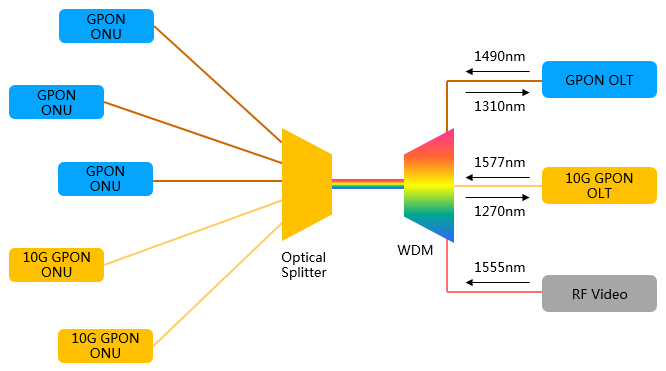GPON, XG-PON, XGS-PON, What is the difference?
- XG-PON, 10-Gigabit-capable passive optical network, provides asymmetric 10G GPON transmission (Maximum downstream line rate: 9.953 Gbit/s, Maximum upstream line rate: 2.488 Gbit/s ).
- XGS-PON, 10-Gigabit-capable symmetric passive optical network, provides symmetric 10G GPON transmission (Maximum downstream line rate: 9.953 Gbit/s, Maximum upstream line rate: 9.953 Gbit/s ).
[boxads]
Specification Differences Between 10G GPON and GPON
| Specifications | GPON | 10G GPON | |
|---|---|---|---|
| XG-PON | XGS-PON | ||
| Wavelength |
|
|
|
| Center wavelength |
|
|
|
| Maximum Line Rate |
|
|
|
| Maximum Physical Transmission Distance |
60 km NOTE: The physical reach is defined by split ratio, optical module size, and fiber quality. |
100 km NOTE: The physical reach is defined by split ratio, optical module size, and fiber quality. |
100 km NOTE: The physical reach is defined by split ratio, optical module size, and fiber quality. |
| Maximum Split Ratio |
1:128 NOTE: The actual split ratio depends on the optical module model and fiber distance. |
1:256 NOTE: The actual split ratio depends on the optical module model and fiber distance. |
1:256 NOTE: The actual split ratio depends on the optical module model and fiber distance. |
[bodyads]
No Wavelength Overlap Between GPON and 10G GPON

10G GPON Can Co-exists with GPON in the Same ODN
Figure 2 shows the GPON and 10G GPON can coexist in the same ODN with wavelength division multiplexing (WDM) mode.


